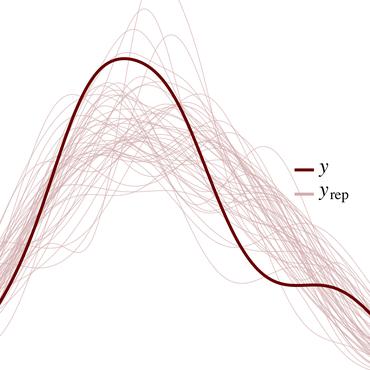Search Results for author: Tejas D. Kulkarni
Found 10 papers, 3 papers with code
Self-Supervised Intrinsic Image Decomposition
no code implementations • NeurIPS 2017 • Michael Janner, Jiajun Wu, Tejas D. Kulkarni, Ilker Yildirim, Joshua B. Tenenbaum
Intrinsic decomposition from a single image is a highly challenging task, due to its inherent ambiguity and the scarcity of training data.
Synthesizing 3D Shapes via Modeling Multi-View Depth Maps and Silhouettes With Deep Generative Networks
no code implementations • CVPR 2017 • Amir Arsalan Soltani, Haibin Huang, Jiajun Wu, Tejas D. Kulkarni, Joshua B. Tenenbaum
We take an alternative approach: learning a generative model over multi-view depth maps or their corresponding silhouettes, and using a deterministic rendering function to produce 3D shapes from these images.
Learning to Perform Physics Experiments via Deep Reinforcement Learning
no code implementations • 6 Nov 2016 • Misha Denil, Pulkit Agrawal, Tejas D. Kulkarni, Tom Erez, Peter Battaglia, Nando de Freitas
When encountering novel objects, humans are able to infer a wide range of physical properties such as mass, friction and deformability by interacting with them in a goal driven way.
Deep Successor Reinforcement Learning
1 code implementation • 8 Jun 2016 • Tejas D. Kulkarni, Ardavan Saeedi, Simanta Gautam, Samuel J. Gershman
The successor map represents the expected future state occupancy from any given state and the reward predictor maps states to scalar rewards.
Hierarchical Deep Reinforcement Learning: Integrating Temporal Abstraction and Intrinsic Motivation
4 code implementations • NeurIPS 2016 • Tejas D. Kulkarni, Karthik R. Narasimhan, Ardavan Saeedi, Joshua B. Tenenbaum
Learning goal-directed behavior in environments with sparse feedback is a major challenge for reinforcement learning algorithms.
Picture: A Probabilistic Programming Language for Scene Perception
no code implementations • CVPR 2015 • Tejas D. Kulkarni, Pushmeet Kohli, Joshua B. Tenenbaum, Vikash Mansinghka
Recent progress on probabilistic modeling and statistical learning, coupled with the availability of large training datasets, has led to remarkable progress in computer vision.
Deep Convolutional Inverse Graphics Network
1 code implementation • NeurIPS 2015 • Tejas D. Kulkarni, Will Whitney, Pushmeet Kohli, Joshua B. Tenenbaum
This paper presents the Deep Convolution Inverse Graphics Network (DC-IGN), a model that learns an interpretable representation of images.
Inverse Graphics with Probabilistic CAD Models
no code implementations • 4 Jul 2014 • Tejas D. Kulkarni, Vikash K. Mansinghka, Pushmeet Kohli, Joshua B. Tenenbaum
We show that it is possible to solve challenging, real-world 3D vision problems by approximate inference in generative models for images based on rendering the outputs of probabilistic CAD (PCAD) programs.
Variational Particle Approximations
no code implementations • 24 Feb 2014 • Ardavan Saeedi, Tejas D. Kulkarni, Vikash Mansinghka, Samuel Gershman
Like Monte Carlo, DPVI can handle multiple modes, and yields exact results in a well-defined limit.
Approximate Bayesian Image Interpretation using Generative Probabilistic Graphics Programs
no code implementations • NeurIPS 2013 • Vikash K. Mansinghka, Tejas D. Kulkarni, Yura N. Perov, Joshua B. Tenenbaum
The idea of computer vision as the Bayesian inverse problem to computer graphics has a long history and an appealing elegance, but it has proved difficult to directly implement.






